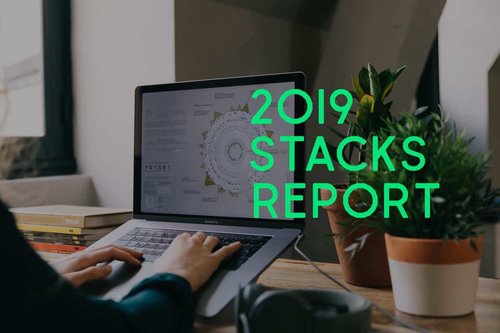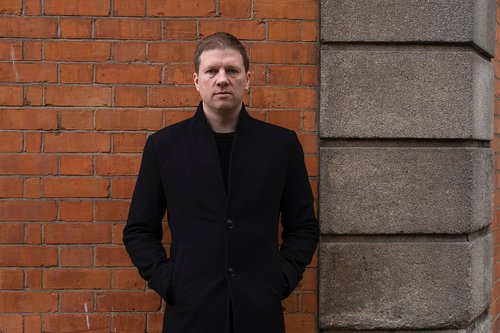How to Be Better on Stage
Nov 13, 2019
6 mins


Tech public speaking coach
Congratulations! Your talk just got accepted at a big conference, the reference in your field of expertise. It’s official, you’re going to speak there. You know your subject, your slides are ready… So why are a myriad of doubts now starting to pop up in your mind, making you feel really anxious about the prospect?
You start questioning why you did that—why did you willingly put yourself in this uncomfortable position? Why have you said you want to speak to a room full of people? They’ll all be judging you. And they must already know everything you’ll be talking about. They’ll be able to see you for the fraud you are. They’ll see you tremble and shake. And what if you go completely blank while you’re up there?
Oh no… Where’s the “Unsubmit CFP” button?
Don’t panic, it’s OK to be scared
It’s totally all right to get cold feet about going on stage. It’s actually the most rational reaction you could have. We human beings are social creatures, we like to be part of a group. Being alone on stage and watched by dozens of pairs of eyes is the exact opposite of being part of a group.
Use the adrenaline shock
When confronted with an unexpected situation, our brain reacts by jumping into “panic mode.” Your breathing accelerates, your palms go moist, you become red in the face… Those are defense mechanisms your body applies so it can concentrate its energy in vital areas. This also makes you think and act faster than you normally would do.
The trick is to harness that energy and use it to your advantage. It’s like an adrenaline shock. Your brain suddenly works faster and makes connections it never would have done otherwise. When used correctly, you can start enjoying the moment instead of dreading it, which sounds easier said than done, we know, so here are a few ways to make it work for you.
Turn it into something familiar
There are two types of speakers: Those who are scared on stage, and those who lie about it. Even experienced speakers who have given hundreds of talks still get that little pit of uneasiness in their stomach. We’re all the same. We all panic when confronted with scary situations like this.
The good news is that the more you do it, the easier it becomes. Anything you do often becomes more familiar. Repetition breeds familiarity and familiarity breeds trust in your own capabilities. This is why rehearsing your talk several times, or knowing your intro and conclusion by heart, will help you feel more secure.
Additionally, knowing how your brain reacts and how to take advantage of that should help you prepare for the big day. Now let’s have a look at what you can do to actually enjoy your time on stage and look as confident as possible.
The many uses of silence
Silence is the speaker’s best friend. Many speaking issues can be solved with it.
You’re speaking too quickly? Adding silence will force you to take a breath.
Your throat is getting sore? Use a long silence to drink from your water bottle.
You want to emphasize the last sentence you said? Add a silence after it.
You want to build anticipation? Add a silence before your next line.
Control the flow with silences
A good silence lasts 1-2 seconds. You should add one between each slide or each important chunk of information. This will give your audience the space to actually take in the last thing you said.
Silences can be used to cover when you’ve gone blank. If you don’t remember what your next idea was supposed to be or what your transition was, just add a silence. Instead of mumbling an uncomfortable “Hmm, well… ” the silence will give you time to think while making it look like it was deliberate and that you wanted to build anticipation.
Silences are signals, not noise
Silences are not wasted time. They are necessary pockets of time your audience will use to process and understand what you’re saying. They help you to control the flow of information you’re sending to the audience. If you were to send everything you know in one dense block of information, people would feel overwhelmed. By doing it in smaller chunks, separated by 1-2 seconds of silence, you give them time to grasp what you’re saying and remember it.
Silence also gives you time to breathe and think. Taking a small break from speaking ensures that your voice stays steady for longer. Silences break the monotony of your flow and set a rhythm to your speech. This will, in turn, keep people hooked for the duration of your talk.
Just like white space is important to a great design, silences are key to a great talk. They are not noise, they are part of the signal. Any vocal tics or mumbling should be replaced by a silence for a better effect. In other words, silence makes you look smarter.
Your feet and hands
Now that we’ve covered your voice, let’s see what you should know about the way to move on stage, because how you move says a lot about how you’re feeling, and you want to look as confident as you can. If you look confident, people will be able to follow what you’re telling them more easily.
Ground your feet
One of the most important things to remember is to ground your feet. Find a position you’re comfortable holding for the duration of your talk and stick to it. Unless you need to point to something specific on your slides, don’t move around the stage. Movement might distract the audience from what you’re saying, so unless it’s absolutely necessary, try to stay in one spot the whole time.
Many of us tend to sway from one foot to the other or back and forth when we’re uncomfortable. Sometimes, we don’t even realize we’re doing it, but your audience will surely notice (and be distracted by it). Check regularly for any swagger, and stop the instant you realize you’re doing it.
Move your hands
On the other hand (no pun intended), your hands should almost always be moving. Your hands are an extension of your speech, so they should be used as such, to drive home some of the points you’re making.
For example, you should count on your fingers when enumerating something, or draw shapes when explaining concepts. Your hands are the most visible part of your non-verbal communication. Keeping them in your pockets or hidden behind the lectern will mean you’ll be missing out on implementing a very useful tool for communicating with your audience. Make sure they’re always visible and use them.
Where to look
This last piece of advice is probably more difficult to apply. Where should you look? There will be lots of people in the room in front of you, so where should you direct your gaze?
Always look at the audience
People came to hear you. You should always be looking at them. Never turn your back to them. Even if you need to point to something in your slides, try to do it from the side. Turning your back on people can feel reassuring to you, as it protects you from their gaze, but it’s also very rude to them.
Avoid looking at your notes or computer screen for too long. It’s OK to check something quickly, but don’t do it while you’re talking to the audience. Instead, add a silence, and use it to read your notes. Then, once you’ve found what you were looking for, lift your head back up, look at the audience, and start again.
Use eye contact
While looking in the general direction of the audience is mandatory, it’s not enough. You should also be looking directly into people’s eyes. If that sounds scary, that’s because it is.
Eye contact is a very special kind of contact between human beings. A lot can go through a direct look into each other’s eyes. When you look directly at someone during your talk, that person will feel that you’re talking to them personally. This is what makes this tool so powerful: It makes your talk personal. People will remember that they’ve been spoken to directly.
Of course, don’t always look at the same person or they might start feeling uncomfortable. Instead, pick a different audience member each time. A good rule of thumb is to address one sentence to one person, and then switch to someone else for the next sentence. Again, silences can give you the right tempo.
By making good eye contact, you’ll have made your talk personal to lots of people. This connection is what will make them remember your subject. And it’s what will make seeing you on stage different from seeing you on YouTube.
Conclusion
Speaking on stage can be scary, but there are ways to decrease your stress levels. Remember those tools and you’ll not only enjoy the moment, but will also look incredibly confident and make a lasting impression on your audience.
So remember: use silences, ground your feet, move your hands, and look people in the eye.
See you on stage!
This article is part of Behind the Code, the media for developers, by developers. Discover more articles and videos by visiting Behind the Code!
Want to contribute? Get published!
Follow us on Twitter to stay tuned!
Illustration by Brice Marchal

More inspiration: Career hacking
Because being a developer is not just about coding, we want to share dedicated tips on soft skills and career paths, help you stay up-to-date with your favorite technologies, and learn more about the job market.

Computing’s Gender Divide: Why Tech Is Stuck in the 1980s
Discover why the percentage of women who held computing-based jobs has been in a steady decline since the 1980s.
Sep 14, 2020

5 Remote-work Lessons From the Open-source Community
The open-source movement has a few things it can share about remote working with the wider software-development community.
Jun 09, 2020

2019 Stacks Report
The most-mentioned technologies in the job specifications published on WTTJ's website in 2019 and the average number of applicants per technology.
Apr 21, 2020

Engineering Management: An Interview with Saad Rehmani
Saad Rehmani, the VP of Engineering at Reddit, shares his most effective management strategies to handle the COVID-19 crisis.
Apr 07, 2020

Engineering Management: An Interview with Rich Archbold
Rich Archbold, the VP of Engineering at Intercom, explains how to develop a management style and how to transition to managing other managers.
Mar 17, 2020
The newsletter that does the job
Want to keep up with the latest articles? Twice a week you can receive stories, jobs, and tips in your inbox.

Looking for your next job?
Over 200,000 people have found a job with Welcome to the Jungle.
Explore jobs